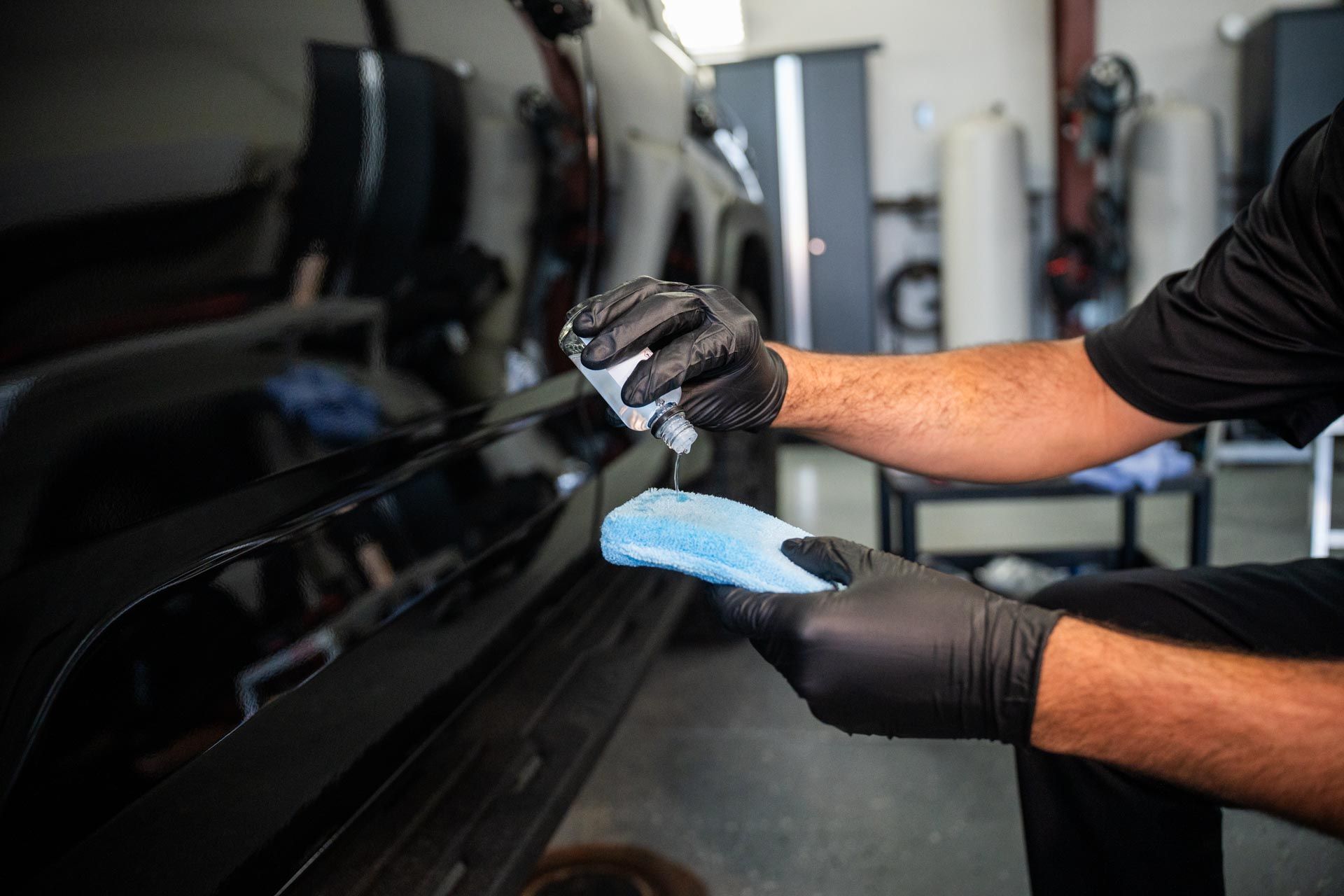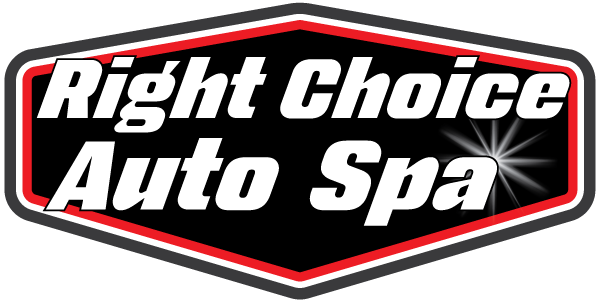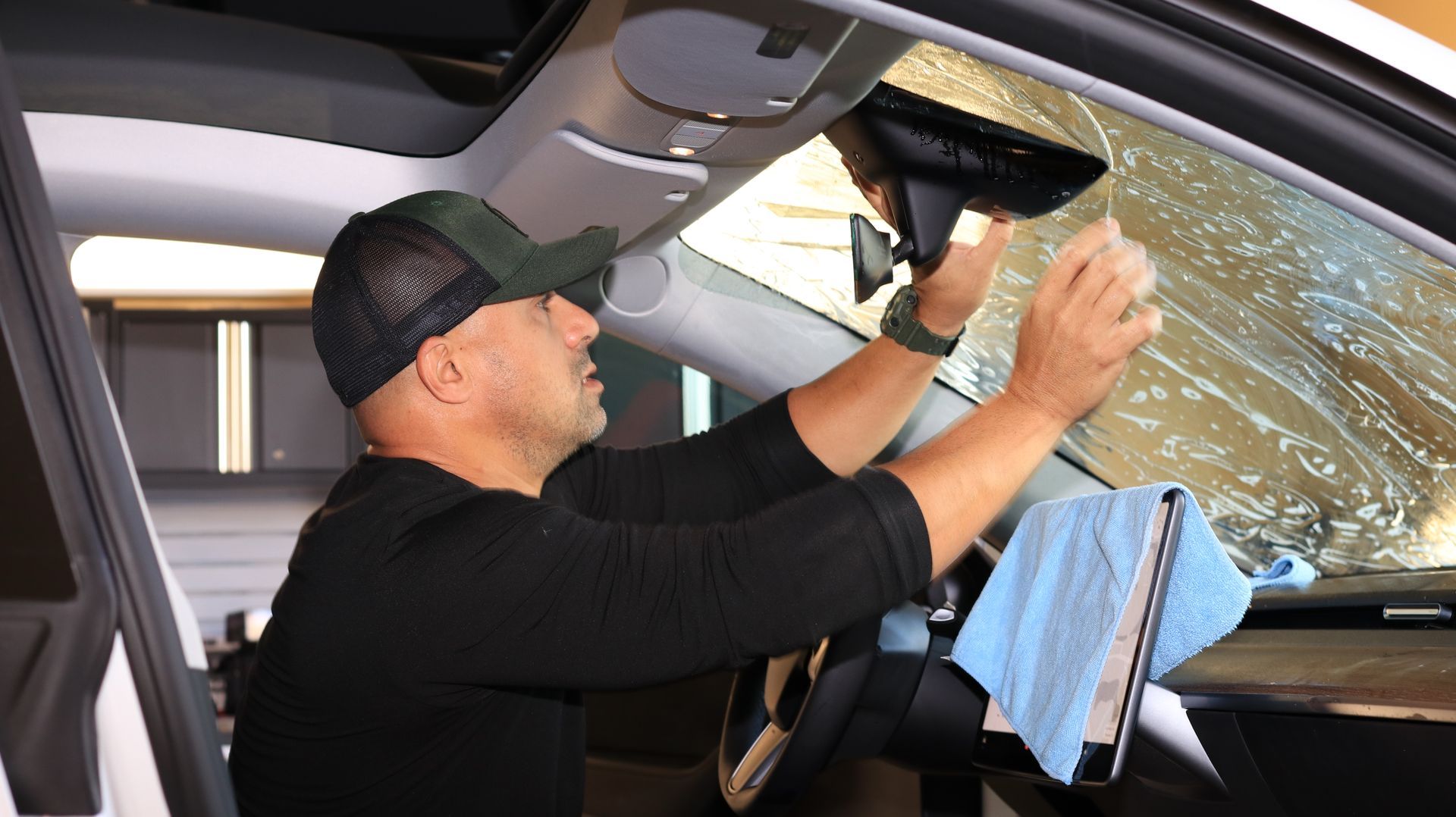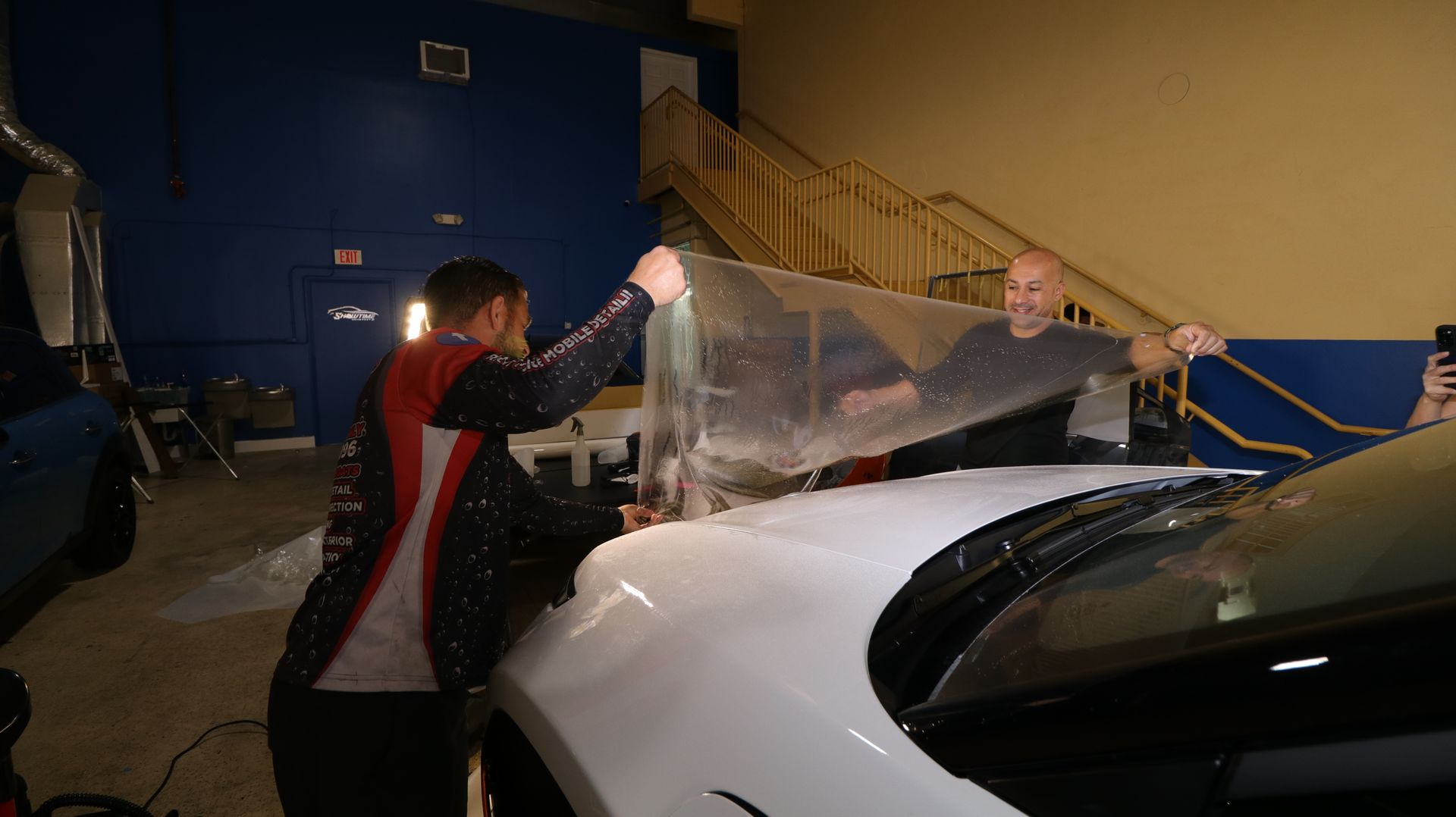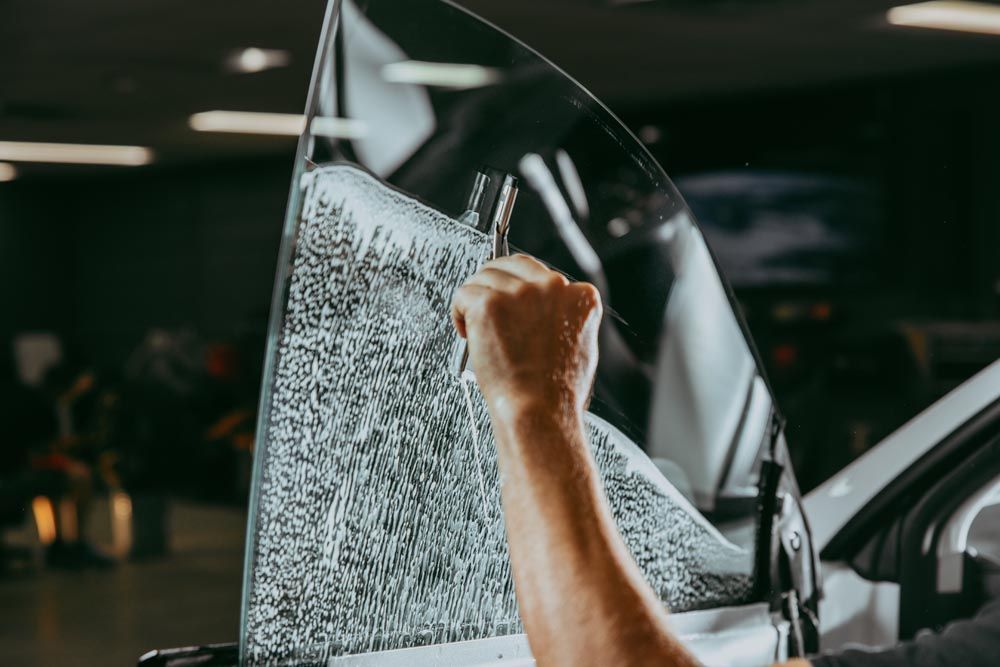Debunking Common Myths About Paint Protection Film: Truths You Must Know
Many of us struggle to determine the most effective ways to protect your car's paint, leaving us perplexed. Among the many options available, Paint Protection Film (PPF) stands out as a modern solution that often gets misunderstood. You might have heard rumors claiming PPF is only for shiny new cars or that it poses risks to your vehicle's original finish. But what if I told you that these myths are completely false?
Through our years of experience in the automotive world here at Right Choice Auto Spa, we've seen firsthand how
PPF benefits vehicles of all ages while serving as an invisible guardian against minor damages and environmental wear. Let's explore some common myths so you can make informed choices for your beloved vehicle.
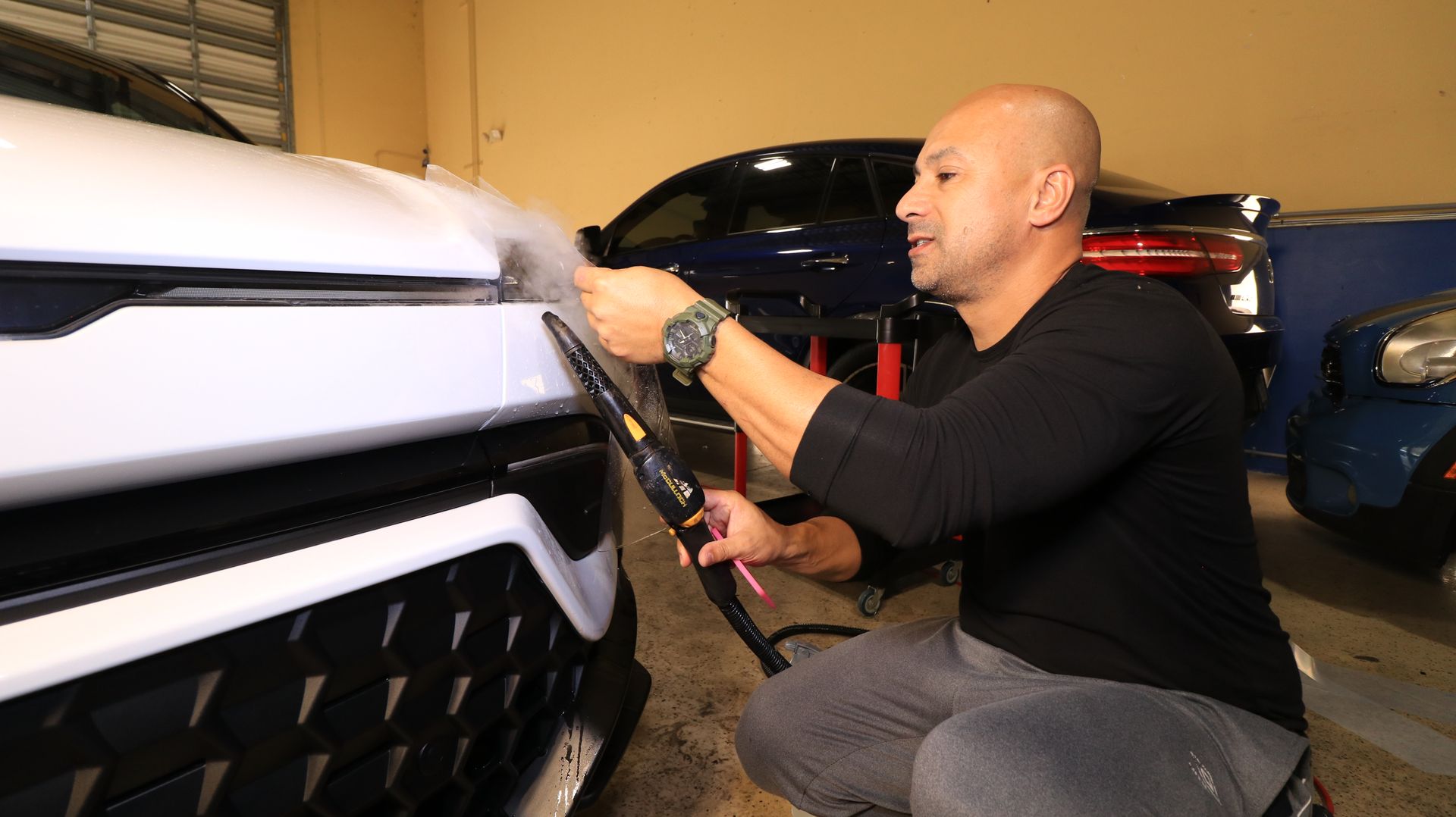
Top Paint Protection Film Myths
Myth 1: Paint Protection Film is Only for High-End Cars
One common myth suggests that PPF is intended exclusively for luxury or high-performance vehicles. This misconception likely arises from an outdated view that only expensive cars deserve protective measures. However, PPF offers significant advantages for all types of vehicles—from family sedans to compact cars.
Think about it: everyday vehicles face the same road debris and environmental challenges as more expensive models. Dings from shopping carts, pesky stone chips on highways, and relentless exposure to Florida's intense UV rays can cause paint deterioration over time, regardless of the car's price tag. Not protecting your vehicle may lead to costly repairs in the long run—money that could have gone toward a quality PPF installation instead.
Myth 2: PPF Damages Original Paint
Another prevalent myth is the notion that applying PPF can harm a vehicle's original paint job. This concern is understandable, especially if you treasure your car's aesthetics.
The good news is that modern PPF is engineered with a specialized adhesive formulation specifically designed to protect the paint beneath it during both application and removal. When applied correctly by professionals, you won't have to worry about peeling paint when it's time to remove the film. Instead, you'll find your vehicle's original finish preserved beautifully underneath.
Just recently, one of our customers expressed relief after having their film removed. They noted how "the paint looked as good as new," which should encourage others who harbor similar concerns.
Myth 3: PPF is Visible and Detracts from Car Appearance
A third myth that circulates among car enthusiasts is that PPF will detract from the overall appearance of their vehicle by being noticeable or unsightly.
In truth, advancements in PPF technology have enabled manufacturers to create films that are virtually invisible once applied. Quality installations utilize high-grade materials that enhance rather than obscure a car's aesthetic appeal. Many of our customers are pleasantly surprised at how the PPF not only blends seamlessly with their vehicles but also contributes added gloss and shine—giving their cars an even more polished look.
By clarifying these misconceptions, vehicle owners can appreciate the value of PPF beyond mere protection. It's an investment in longevity and beauty for any automobile.
Is Paint Protection Film Always Visible?
The truth is, high-quality Paint Protection Film (PPF) can be nearly invisible when properly installed. Brands like XPEL and 3M manufacture films known for their exceptional clarity, allowing them to blend seamlessly with your vehicle's paintwork. When expertly applied, most people won't even notice it's there, making it a wise investment for preserving your car's appearance.
However, the clarity of PPF largely hinges on the quality of its installation. If it's not applied correctly, unsightly issues such as bubbles or uneven edges may arise, drawing attention to the film itself. This underscores the importance of having PPF installed by professionals who know what they're doing. A botched job can indeed lead to aesthetic disappointments that could have otherwise been avoided.
At Right Choice Auto Spa, we've had plenty of instances where customers marvel at how different vehicles look, especially when they see PPF in action on a variety of cars. They often comment on their surprise—how they couldn't tell which cars were protected until we pointed out features like seams or edges. Little do they know just how much protection these films provide while being virtually undetectable.
An expert installation means peace of mind, both for aesthetics and functionality.
Can Paint Protection Film Be Removed Easily?
The permanence of PPF can indeed trigger anxiety among car owners, but it's important to know that removal is typically a hassle-free process when done correctly. In fact, many people find the removal quite straightforward. When I recently guided a customer through this process, they marveled at how simple it was, stating that once they got started, they couldn't believe they had waited so long to make this move.
Step-by-Step Removal Process
To effectively remove the PPF without damaging your vehicle's paint underneath, follow these steps carefully. First and foremost, you'll want to create the right environment for removal by ensuring a warm ambient temperature. Ideally, working within a range of 70°F to 100°F (21°C to 38°C) will allow the adhesive to soften sufficiently.
Start by gently heating the film with a standard hairdryer or heat gun. Hold the device at a distance of about 6 to 12 inches (15 to 30 cm) from the surface to avoid overheating any particular area and potentially damaging the paint.
Once warmed up, begin peeling back the film at about a 45-degree angle. This technique minimizes stress on both the film and the vehicle's surface underneath. Proceed slowly. If you notice any resistance or if the film feels like it's pulling too hard, apply heat again to soften the adhesive further.
Sometimes you may find adhesive residue left behind after removing the PPF. If that happens, don't worry! Use an adhesive remover specifically designed for automotive applications. Applying this product typically takes only 5 to 10 minutes for effective cleaning.
One of our customers shared, "The removal process was so straightforward that I did it myself in my garage without any hassle."
While some films can be slightly more difficult to remove based on brand and age, following these steps generally yields great results. Understanding this process alleviates fears about PPF being a permanent fixture on your vehicle and emphasizes how protective layers can enhance your vehicle's longevity without commitment issues.

Is PPF Beneficial Only for New Cars?
Many car owners mistakenly believe that Paint Protection Film (PPF) is exclusively for new vehicles, but this couldn't be further from the truth. In reality, PPF can provide significant benefits to cars of any age. Whether your car is fresh off the lot or a beloved classic with a few scratches and dings, applying PPF can greatly enhance and maintain its appearance.
One of the essential functions of PPF is its remarkable ability to protect the existing paint job, serving as a barrier against environmental hazards like UV rays, road debris, and general wear from everyday use. For older vehicles, this protective layer not only guards against future damage but can also help rejuvenate the vehicle's overall look. Users often notice that it preserves their paint against fading while boosting paint longevity.
I remember an instance at our shop when an owner brought in a vintage model. The paint was beginning to show its age, with some dullness creeping in. Once we applied PPF, the owner observed, "It's like I've turned back time! My car looks years younger thanks to that film." It's moments like these that illustrate why applying PPF can make such a difference, even on older cars.
But let's clarify some misconceptions about the application process. Many think that if they don't have a pristine finish, there's no point in adding PPF. However, installing it on pre-owned cars offers a chance to correct minor imperfections first, allowing the protective film to enhance the new look of your vehicle while also guarding against further damage.
Protection Levels of Paint Protection Film
Many car owners may not fully grasp the incredible range of protection that PPF offers. This film acts as a robust shield against an array of potential damages that your vehicle faces daily. Imagine this film as a superhero cloak, warding off not just minor annoyances but also significant threats to your car's exterior.
Environmental Protection
One of the standout features of PPF is its ability to protect against environmental elements. Everyday occurrences like road debris, bird droppings, and harmful UV rays can wreak havoc on a car's paint job over time. Studies have demonstrated that vehicles equipped with PPF experience 50% fewer paint chips and minor scratches when compared to those without it, showcasing how effectively it preserves the vehicle's aesthetics.
This protective layer ensures that the vibrant colors and finishes often seen in showroom cars are maintained long after they leave the dealership.
Furthermore, consider harsh weather conditions—rain, intense Florida sun, or extreme heat can all contribute to the degradation of paint over time. PPF serves as an insulator against these extremes, effectively prolonging the life of your vehicle's surface through a delicate yet durable barrier of protection.
Self-Healing Properties
Now picture PPF much like having self-healing skin. Just as tiny cuts on our skin can mend themselves given proper conditions, PPF has special self-healing properties that allow minor scratches to disappear when exposed to heat. This can occur from something as simple as sunlight or the warmth of a car wash. It's like having an invisible shield that not only defends against damage but also repairs itself, keeping your vehicle looking immaculate for years.
The implications of these protective features are immense. For anyone who takes pride in their vehicle's appearance or considers resale value important, investing in PPF pays dividends in the long run. Not only does it keep your car looking fresh and new, but it also reduces the likelihood of costly repairs down the road caused by neglecting protective measures.
Affordability of Paint Protection Film
Cost often serves as a checkpoint for many vehicle owners contemplating the installation of PPF. At first glance, the price tag associated with applying this protective layer may appear daunting. However, it's crucial to take a broader view of what you're investing in.
Consider this: while the initial upfront costs for professional PPF application generally range from $1,500 to $3,000, this expense can significantly diminish future costs related to paint repairs or complete repaints that can escalate anywhere from $3,000 to $10,000.
When you view it through that lens, PPF is not merely an expenditure—it's a proactive approach toward maintaining your vehicle's aesthetic and value.
The savings pile up over time, especially when you live in areas susceptible to harsh environmental conditions. For instance, here in South Florida, where sun exposure and road debris are constant challenges, protecting your paint becomes even more necessary to safeguard against fading and chipping. By investing in PPF, you're essentially shielding your vehicle from day-to-day hazards that would otherwise damage its surface.
In addition to preserving your car's exterior, PPF significantly reduces maintenance efforts. Without this protection, regular washing and repainting can feel like a never-ending chore and expense. By minimizing paint blemishes, PPF allows for an easier cleaning routine and helps maintain that showroom shine without needing constant care. Imagine saving both time and money on detailing services that you would otherwise need for upkeep—now that's worth considering!
If you're still hesitant about making the leap into PPF installation, consider starting small—applying it just to high-impact areas like the hood or mirrors provides a nice compromise between cost and protection. The prices for partial coverage typically hover between $100 and $900, allowing you to test the waters without committing entirely at once.
As we navigate through these considerations around costs, remember that investing in PPF essentially translates into affordability over time due to reduced repair needs and increased vehicle longevity. It's about weighing short-term expenses against long-term benefits to make an informed choice for your vehicle's health.
Final Thoughts
Paint Protection Film isn't just another add-on—it's one of the smartest investments you can make for your vehicle, regardless of its age or value. Whether you're driving a brand-new Tesla Cybertruck or maintaining a well-loved Toyota Tundra, PPF offers proven protection against the elements that threaten your car's finish every single day.
Here in Sunrise and throughout South Florida, our vehicles face unique challenges: intense UV rays, road debris, bird droppings, and the wear and tear of daily commutes. PPF acts as an invisible shield, preserving your paint's vibrant appearance while requiring minimal maintenance on your part.
At Right Choice Auto Spa, we've seen countless customers express relief and satisfaction after protecting their vehicles with quality PPF. From the flawless installation to the long-term peace of mind it provides, this investment pays for itself by preventing costly repairs and maintaining your vehicle's resale value.
If you're ready to protect your ride or have questions about which PPF option is right for you, don't hesitate to
reach out. We're here to provide honest advice, fast responses, and the expert installation you deserve. Your car is more than just transportation—it's an investment worth protecting.
